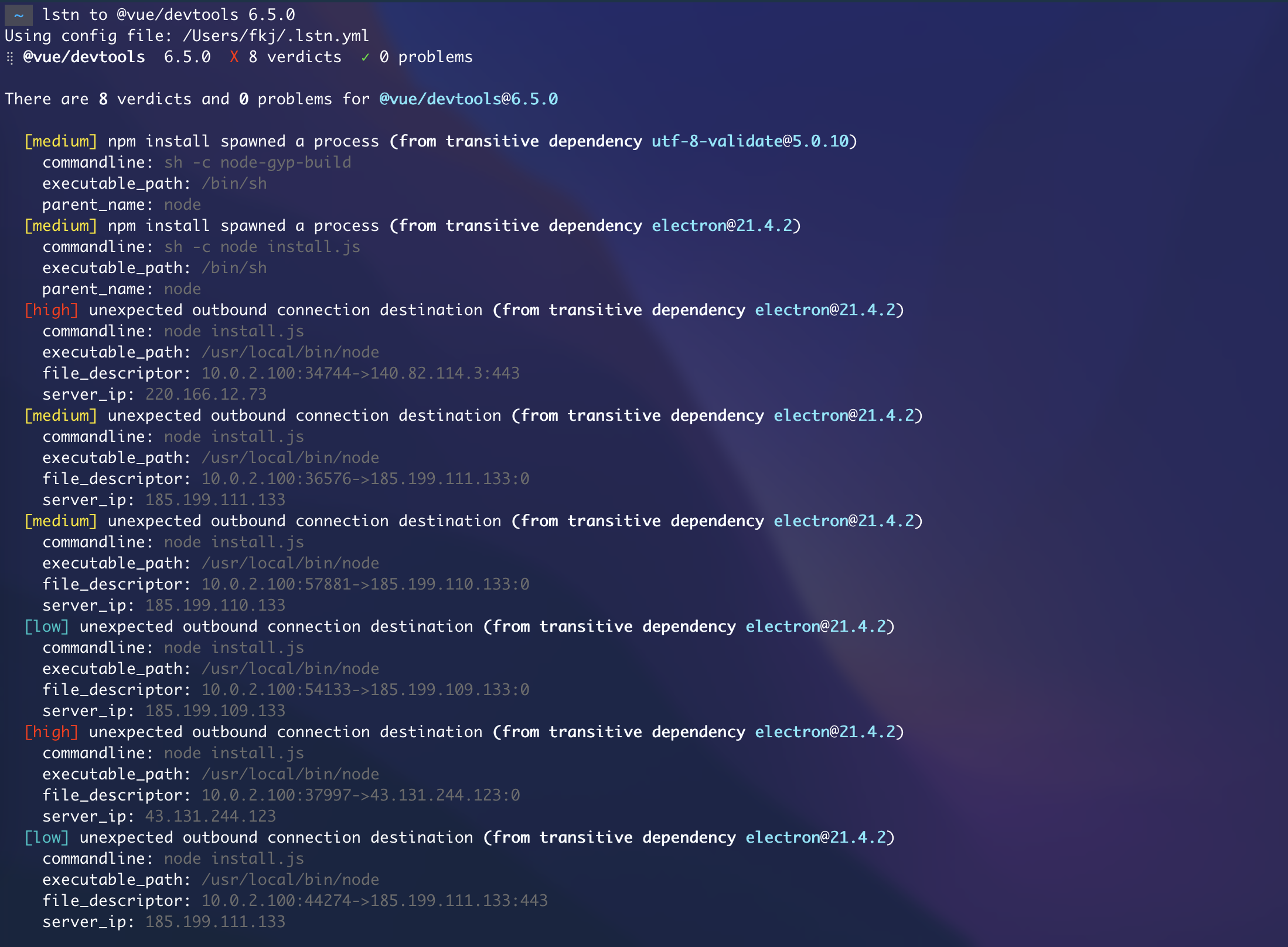lstn is the listen.dev command line. It lets you analyze the behavior of your dependencies.
To install lstn in your environment, refer to the installation section below. For usage instructions, see:
- the usage manual
- the guide about the
~/.lstn.yamlconfig file - the guide about the
LSTN_*environment variables - the reporters reference
We recommend using the GitHub Action for running lstn in CI for GitHub projects. For integration instructions see this guide.
It's highly recommended to install a specific version of lstn available on the releases page. Here are a few ways to install it:
# The binary will be /usr/local/bin/lstn
curl -sSfL https://lstn.dev/get | sh -s -- -b /usr/local/bin
# Or install it into $PWD/bin/
curl -sSfL https://lstn.dev/get | sh -s
# In Alpine Linux (as it does not come with curl by default)
wget -O- -nv https://lstn.dev/get | sh -sYou can test the installation by running:
lstn versionTo install lstn locally, see the options below:
curl -sSfL https://lstn.dev/get | sh -s -- -b /usr/local/bin
lstn versionlstn is available via TODO: Homebrew, ..., and as a downloadable binary from our releases page.
lstn is available via:
- TODO: our Debian and RPM repositories
- OS-agnostic package managers such as TODO: Homebrew, ...
- our releases pages as precompiled binaries.
We recommend using binary installation. Using go install or go get might work but those aren't guaranteed to.
Why?
- Some users use the
-uflag forgo getwhich upgrades our dependencies: we can not guarantee they work! - The
go.modreplacement directive doesn't apply. - The
lstnstability may depend on a user's Go version. - It allows installation from the main branch which can't be considered stable.
- It is way slower than binary installation.
If anything feels off, or if you feel that some functionality is missing, please check out the contributing page.
There you will find instructions for sharing your feedback, building the tool locally, and submitting pull requests to the project.
